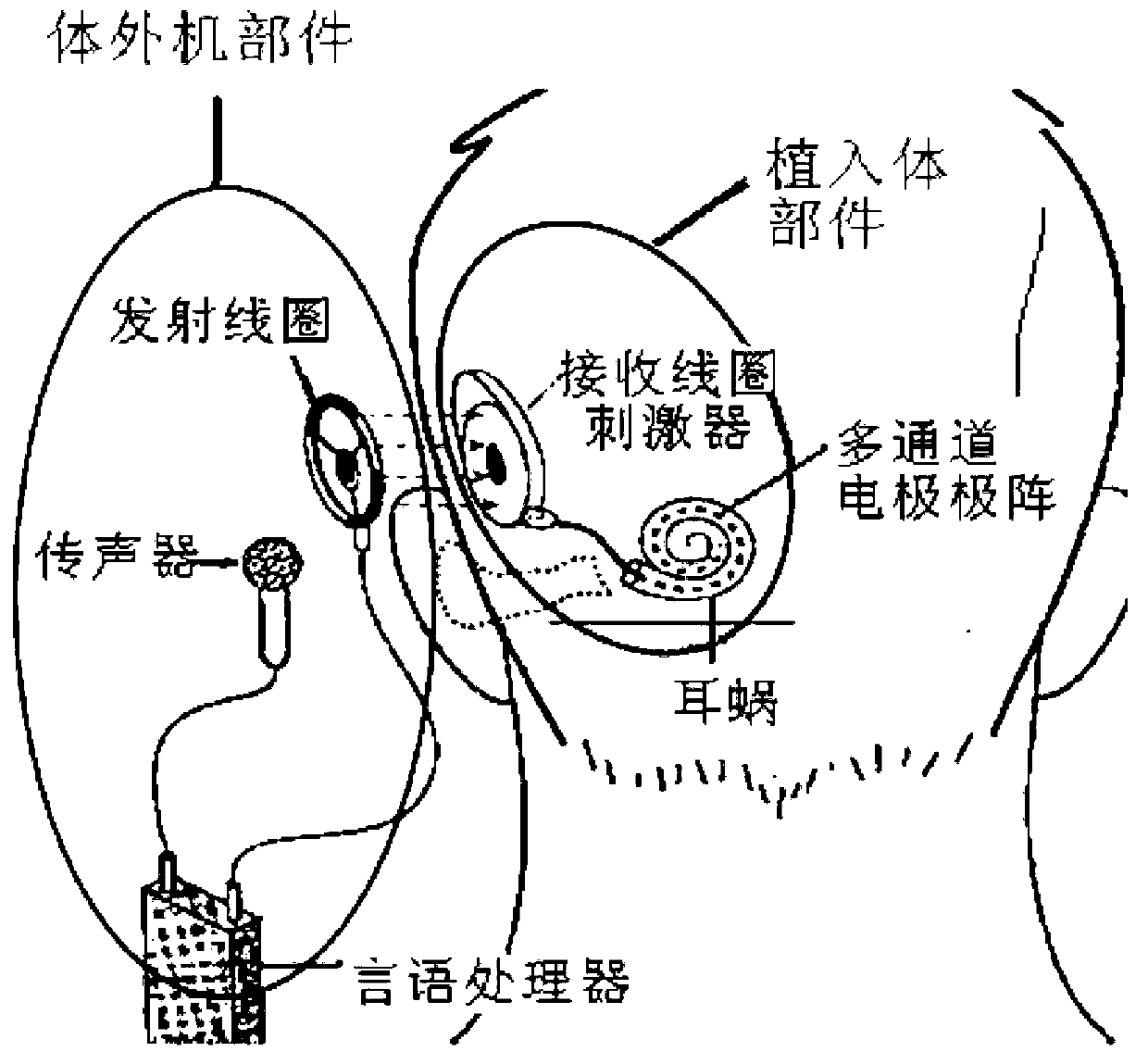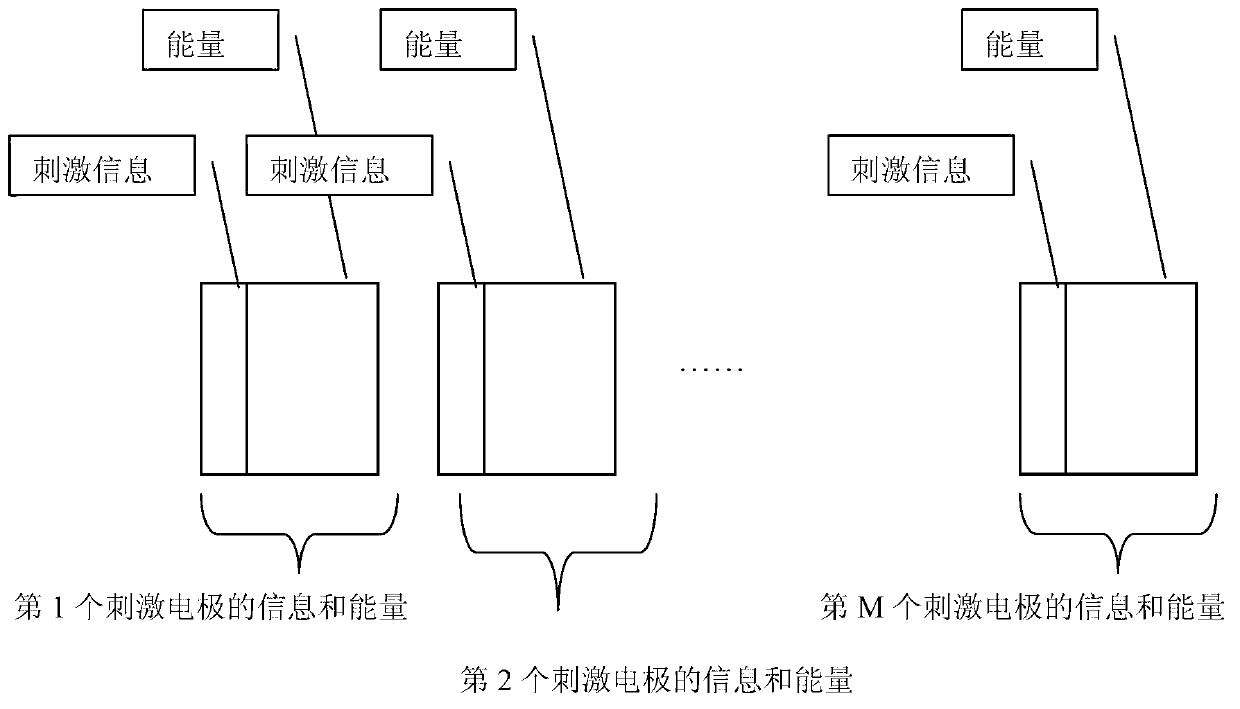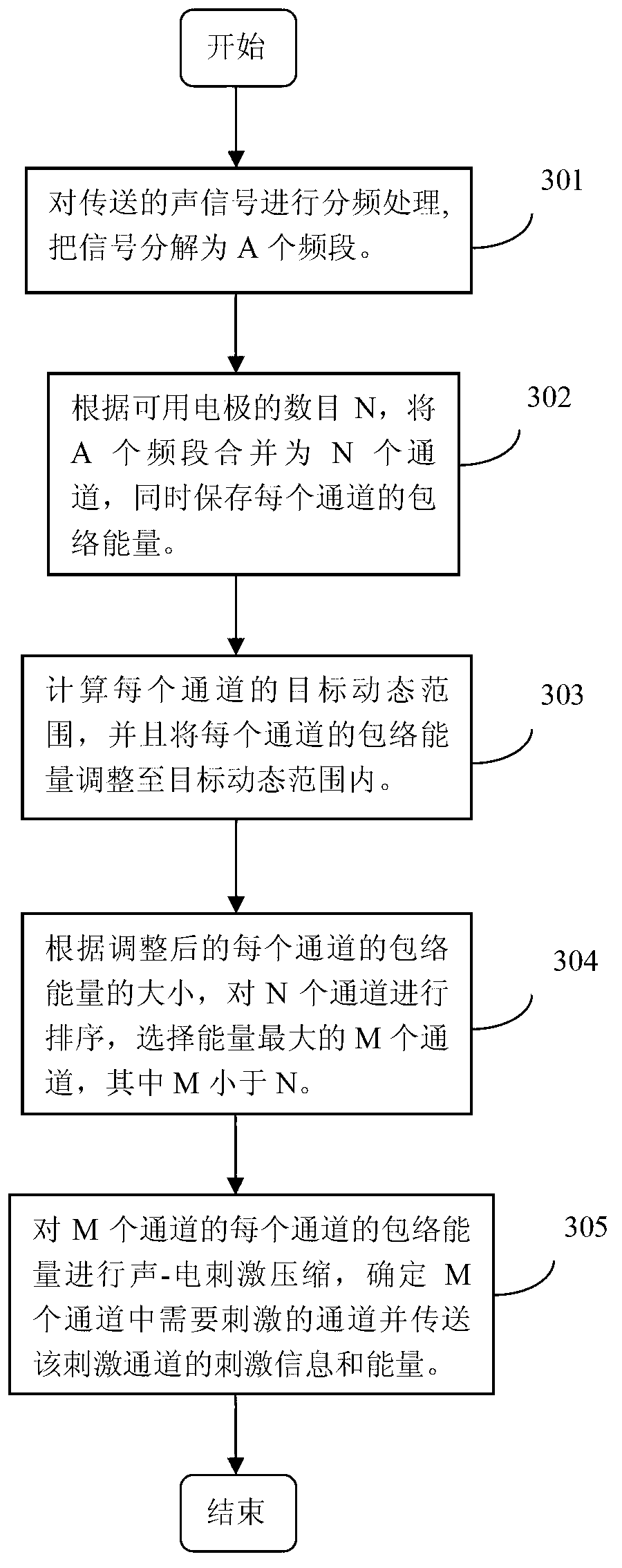Method and system for processing signal of channel self-adaptation dynamic peak artificial cochlea
A cochlear implant and signal processing technology, applied in ear treatment, medical science, prosthesis, etc., can solve problems such as unpleasantness and little difference in energy consumption
- Summary
- Abstract
- Description
- Claims
- Application Information
AI Technical Summary
Problems solved by technology
Method used
Image
Examples
Embodiment Construction
[0059] In order to make the object, technical solution and advantages of the present invention clearer, the present invention will be described in further detail below in conjunction with specific embodiments and with reference to the accompanying drawings.
[0060] refer to image 3 As shown, it is a schematic flow chart of the channel-adaptive dynamic peak cochlear implant signal processing method according to the embodiment of the present invention. As an embodiment of the present invention, the channel-adaptive dynamic peak cochlear implant signal processing method includes the following steps:
[0061] Step 301, perform frequency division processing on the transmitted acoustic signal, and decompose the signal into A frequency bands. In one embodiment of the present invention, the specific implementation process is as follows:
[0062] Perform frequency division processing on the transmitted acoustic signal, and use a digital signal processing chip (DSP) to perform freque...
PUM
 Login to View More
Login to View More Abstract
Description
Claims
Application Information
 Login to View More
Login to View More - R&D
- Intellectual Property
- Life Sciences
- Materials
- Tech Scout
- Unparalleled Data Quality
- Higher Quality Content
- 60% Fewer Hallucinations
Browse by: Latest US Patents, China's latest patents, Technical Efficacy Thesaurus, Application Domain, Technology Topic, Popular Technical Reports.
© 2025 PatSnap. All rights reserved.Legal|Privacy policy|Modern Slavery Act Transparency Statement|Sitemap|About US| Contact US: help@patsnap.com



